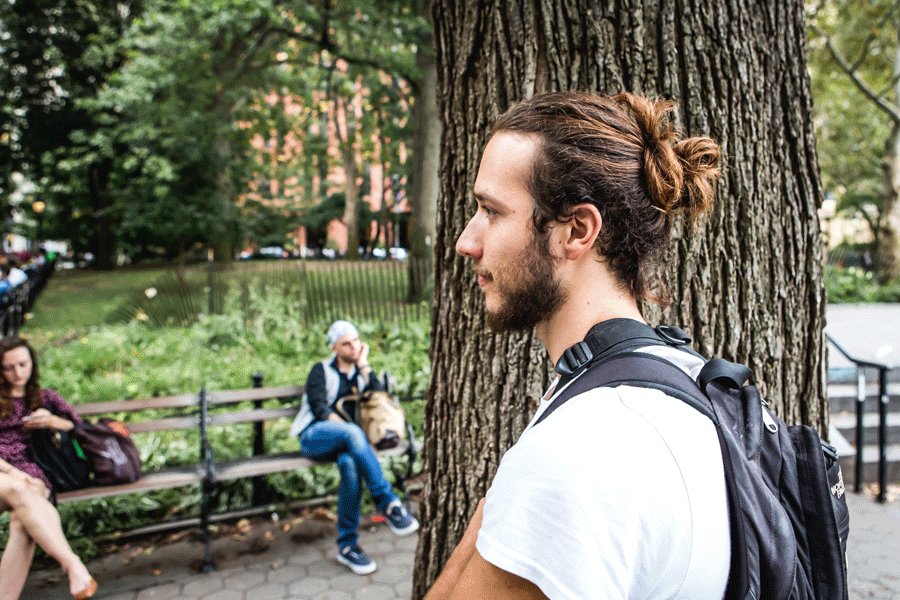Baldness by bun: plight of top knot
October 5, 2015
Over the past several days, inhabitants of the Village have found themselves at the epicenter of a spreading panic: the irresistibly sexy man bun is a leading cause in premature balding. This epidemic is singular to the male segment of the Lower East Side sporting exposed ankles under cuffed dress pants with sustainably harvested bamboo sunglasses shielding them from the mediocrity of the nonlocal masses in Washington Square Park.
In their quest to combine function with deliberately disheveled perfection, these millennials have put themselves at risk for traction alopecia, a balding pattern resulting from strain placed on hair follicles over extended periods of time. While hair specialists concur on the growing trend, incredulity runs high among the man bun community. Tisch sophomore Will Robinson counts himself among those skeptics.
“I have a hard time believing it, I mean this, I can tug on this,” said Robinson, tugging on his own locks.
Contrary to the recent influx of articles regarding traction alopecia, the condition isn’t a recent discovery. The balding pattern was acknowledged within the medical community as early as 1907, and has previously been associated with tight hairstyles such as buns or braids that exert stress on hair follicles. Traction alopecia is especially common among black women who sport hairstyles requiring tight pulling of hair through braiding over months at a time. Yet, rather than decrying dreads or cornrows, pop culture has chosen to focus on the condition in terms of the beloved man bun.
It will assuage the fears of “mun” proponents, however, to know that the condition is reversible as well as preventable. By simply loosening their bun, using gentle hair ties, and taking care to not sleep in the style, men can exponentially lower their likelihood of experiencing the balding pattern. Those sporting the style are now faced with a decision: either de-bun or do as much as they can to decrease the risk for hair loss.
Men sporting semi-buns, a subclass of the man bun also referred to as “The Pineapple” or “The Top Knot,” face a substantially higher risk due to the tight nature of the style. It is these buns particularly, not the looser variety donned by Jared Leto or Jake Gyllenhaal, that have led to the recent topical alopecia scare.
Perhaps, however, it is an act of mercy, separating the unfit buns from the fit and doing the Lower East Side a favor by sorting out the less beloved top knots that consist of a small shoot of hair, a style flattering no one. Even Tisch senior Phillip Gladkov acquiesced, calling out what he sees as the unappealing aesthetic of the hairstyle.
“Quite frankly, when I look at man buns on other people they look really stupid,” Gladkov said.
The recent outcrop of hair loss signals a survival of the fittest within the community, with bun enthusiasts hoping that only the best buns survive. Men are now challenged to either strike the perfect balance between form and functionality going forward or to follow the lead of Pratt freshman Alexander Roth who conceded that the style may not be worth the risk of baldness.
“Yeah, it’s probably honestly happening to me,” said Roth as he let out his bun and walked away.
Email Grace Dixon at [email protected].



























































































































































